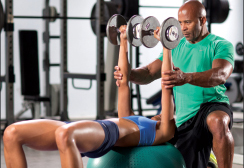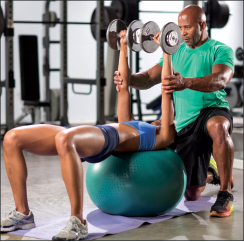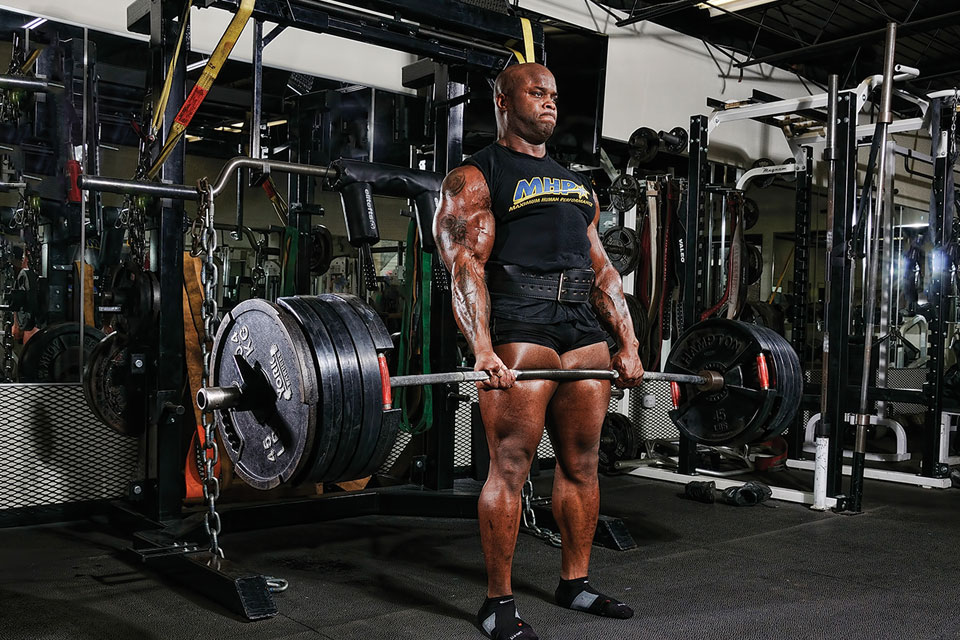

 All fields are subject to fads and promotion. Weight training and fitness are no exceptions. The use of balance boards on common weight-training exercises has been around for about 18 years. It grew out of the concept of using a Swiss ball—also known as a stability ball or fitness ball—in an attempt to activate more “core muscles,” such as the very thin transverse abdominus. The next thing we knew, untrained 50-year-olds were performing light dumbbell curls on balance boards. Can you actually make any improvement with that?
All fields are subject to fads and promotion. Weight training and fitness are no exceptions. The use of balance boards on common weight-training exercises has been around for about 18 years. It grew out of the concept of using a Swiss ball—also known as a stability ball or fitness ball—in an attempt to activate more “core muscles,” such as the very thin transverse abdominus. The next thing we knew, untrained 50-year-olds were performing light dumbbell curls on balance boards. Can you actually make any improvement with that?
R. Stanton, et. al., found that adding stability-ball work to the programs of athletes did not improve abdominal and back muscle activity, treadmill VO2 max, running economy or running posture over athletes who did not do the stability-ball work.
Another study compared the activity of back muscles, the rectus abdominus and the external obliques in resistance-trained men during the squat and deadlift on 50 percent, 70 percent, 90 percent and 100 percent maximum lifts with three stability-ball exercises. The squat and deadlift provided significantly greater back activity than the ball and at least equal activity in the rectus abdominus, a.k.a., the six-pack muscle, and the external obliques. The authors further noted that the stability ball may not provide a sufficient stimulus for increasing muscular strength or growth.
Studies exist in which untrained, deconditioned people have shown improvement with the stability ball. Elderly patients have demonstrated improvement in balance with the balance board. Would untrained, deconditioned people improve equally on a more standard exercise program in which they simply started with very low volume and low intensity until they acclimated? Such people were certainly making good progress before balance boards, stability balls and half-balls existed.
Too many studies did not compare an increased training load, which would recruit the core muscles as well, with the balance and stability work. So the question remains, When should we use these exercises, and when should we get back to basic training?
The plank is a popular core stability exercise. It is a modification of a pushup position. The side plank is certainly more difficult. The problem is, once you have mastered the exercise, it is difficult to progress in strength.
Balance-board weight-training exercises are not without risk. A patient recently flew out from Texas to see me. She’d had back surgery in 2001, and her outcome had been “great.” Last year she started training with someone who had her on a half-ball performing alternate curls and alternating lifting one knee up. The result was an aching low back that day and an inability to get out of bed the next. One year later she is looking at another surgical procedure.
Sometimes it’s a bad idea to rock a painful segment, an unstable segment or a postfusion segment. I realize that some postfusion patients have improved by using these very methods; however, it must be a case-by-case decision and not a blanket form of training for everyone.
If your goal is to become truly stronger, you cannot do it by lifting on an unstable surface. In order to generate real force, you must have a stable surface. Olympic weightlifters have shoes with wood in the heels, and they lift the bar from a wooden platform—wood on wood. That is a strong, stable surface. It allows the maximum weight to be moved at maximum speed.
The weightlifters have superior core stability. There is a video of former U.S. men’s weightlifting coach Dragomir Cioroslan performing a snatch with more than 100 kilograms while standing on a balance board. Dragomir weighed about 150 pounds at the time. He did that at the Chicago Bulls training camp, where he was consulting with hall of fame strength and conditioning coach Al Vermeil. Part of Dragomir’s training in Romania was to have one foot on one force plate and the other foot on a different force plate. That tool was used to teach the athletes to pull with equal force on both feet. Few people ever have the opportunity to train that way. Dragomir’s balance and core stability did not come from balance boards and balls.
Train smart, and then train hard.
—Joseph M. Horrigan
Editor’s note: Visit www.SoftTissueCenter.com for reprints of Horrigan’s past Sportsmedicine columns that have appeared in IRON MAN. You can order the book 7-Minute Rotator Cuff Solution by Horrigan and Jerry Robinson from Home Gym Warehouse, (800) 447-0008 or at www.Home-Gym.com.
Nuzzo, J.L., et al. (2008). Trunk muscle activity during stability ball and free weight exercises. J Strength Cond Res. 22(1):95-102.
Stanton, R., et al. (2004). The effect of short-term Swiss ball training on core stability and running economy. J Strength Cond Res. 18(3):522-8).






















You must be logged in to post a comment Login